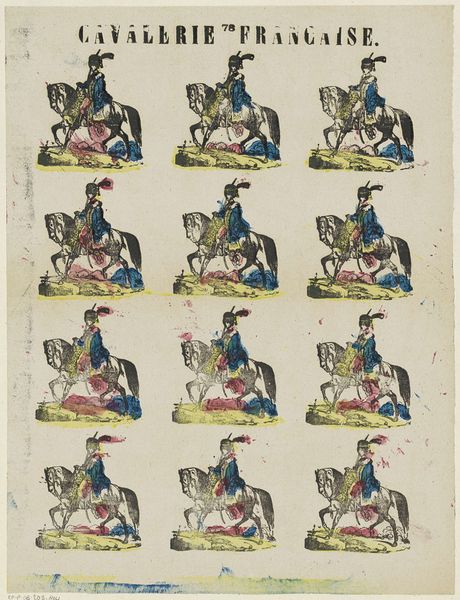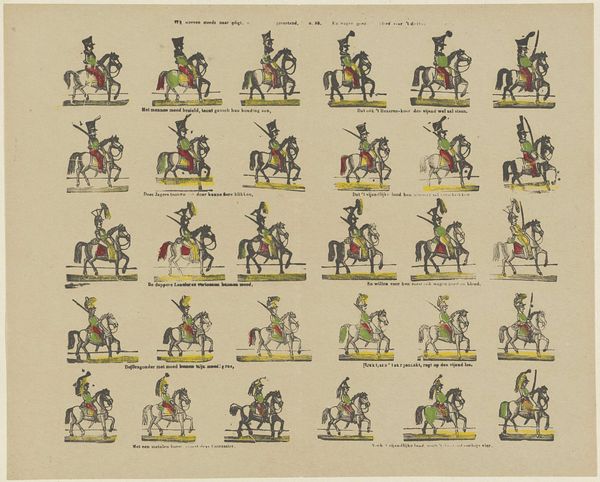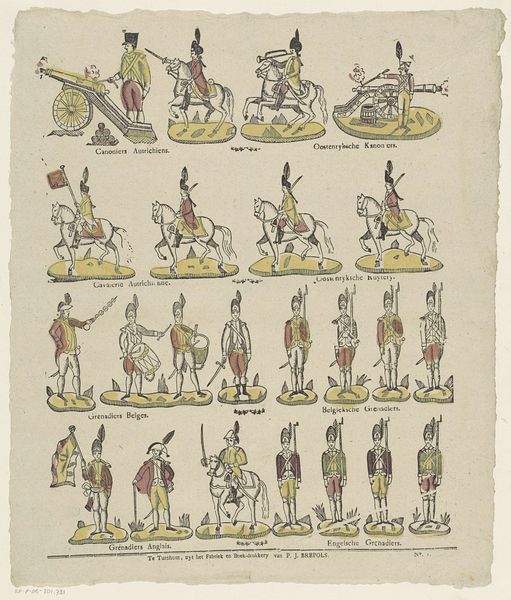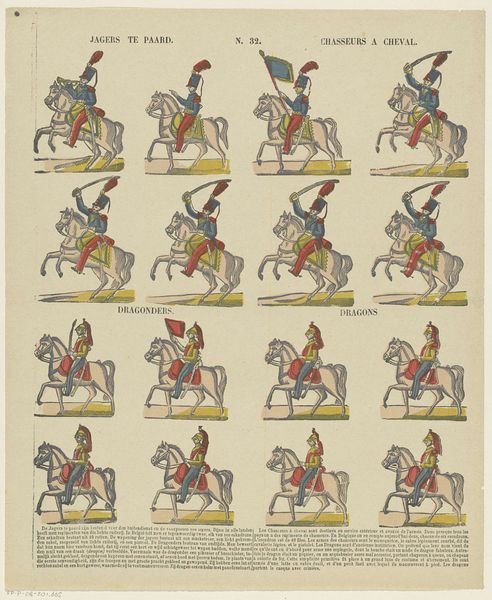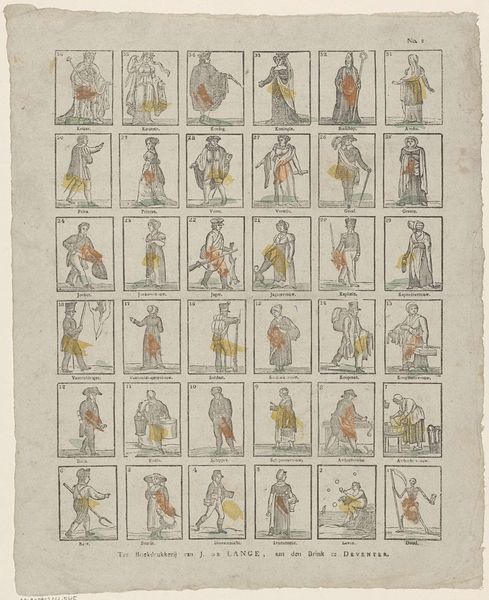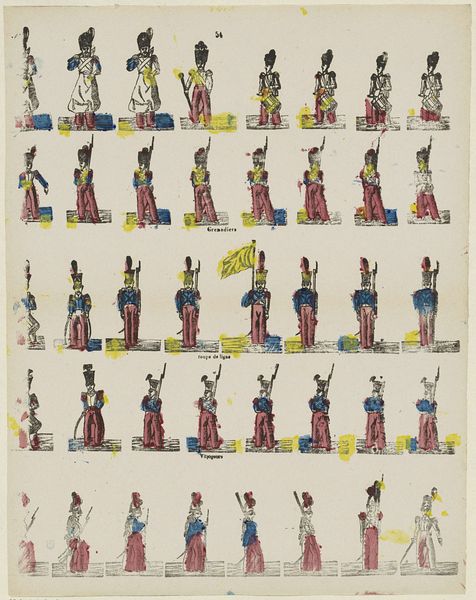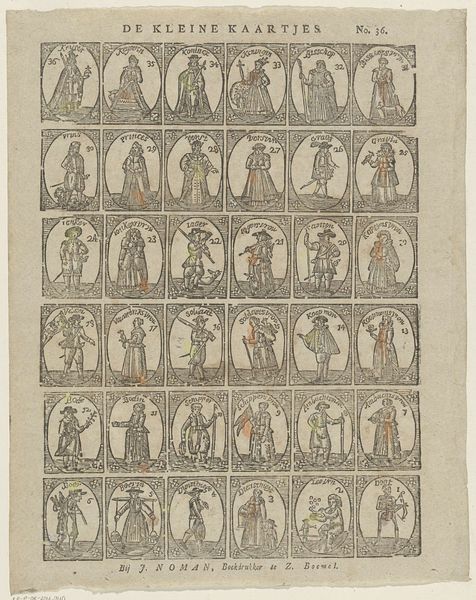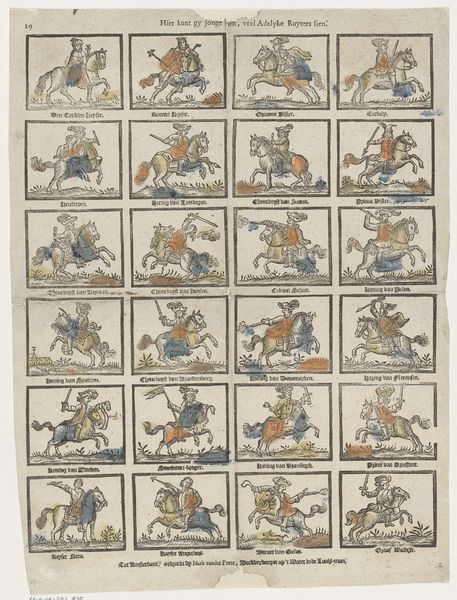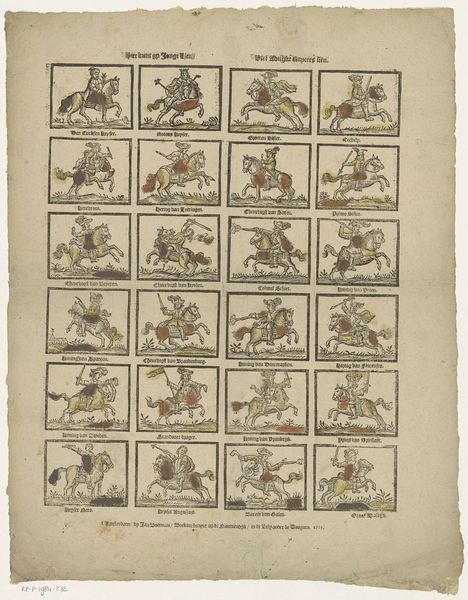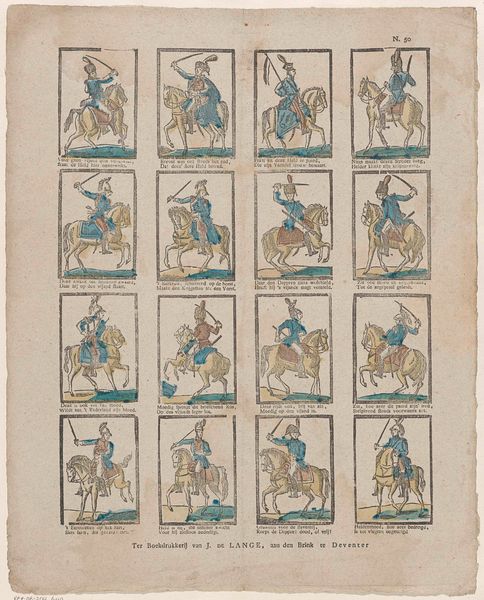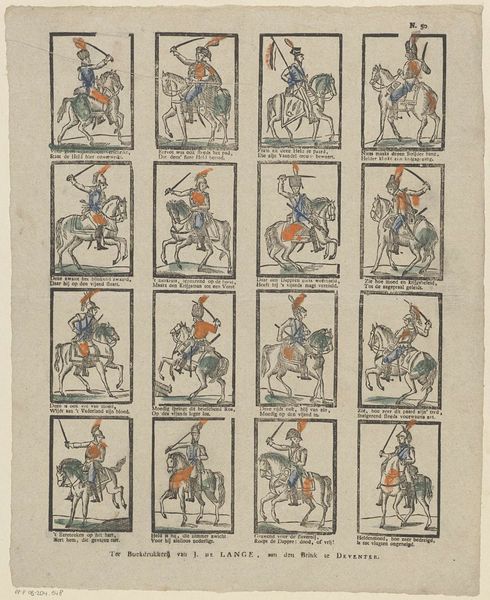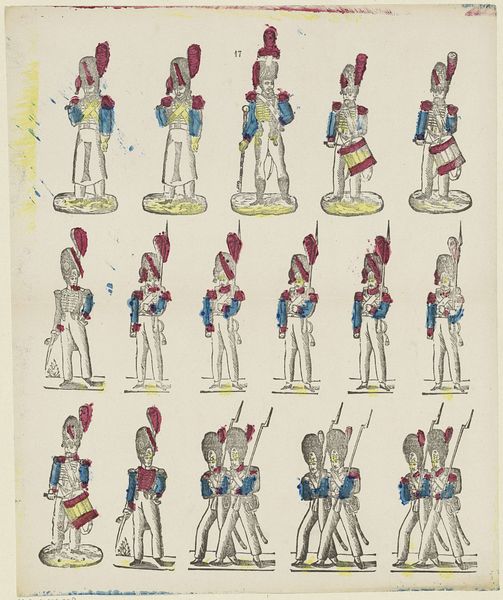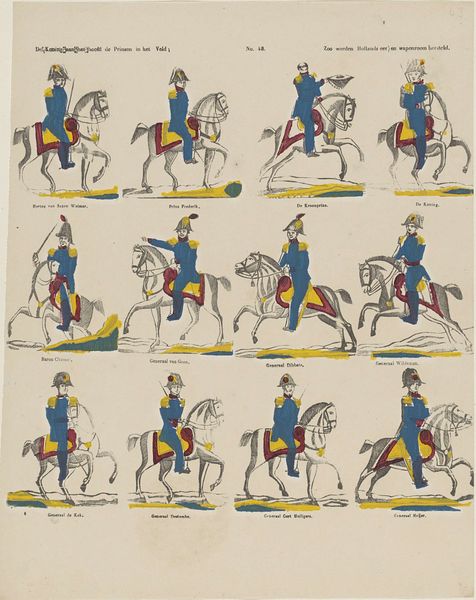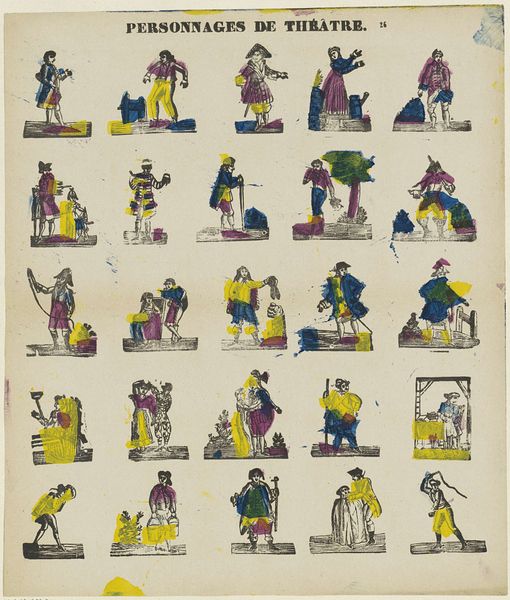
drawing, print, watercolor
#
drawing
# print
#
landscape
#
figuration
#
watercolor
#
pen and pencil
#
watercolour bleed
#
watercolour illustration
Dimensions: height 382 mm, width 310 mm
Copyright: Rijks Museum: Open Domain
Editor: This sheet of studies, "Militairen te paard," which translates to "Military Men on Horseback," is by an anonymous artist and dates from somewhere between 1827 and 1894. It's rendered in pen, pencil, watercolor, and perhaps other printmaking techniques. What strikes me is its almost repetitive, stencil-like quality. How do you interpret this work, especially considering the period in which it was made? Curator: It’s interesting that you noticed the repetitive nature. I think it's crucial to understand the function of such studies within a specific historical context. Military imagery during this era often served propagandistic purposes, reinforcing ideas of national power and martial prowess, but I would not define this specific image as such. What's really interesting is thinking about who would need such repetitive drawing? Didactic context might come to mind? Editor: Possibly a training exercise? The consistency does point to some structured exercise, maybe within an academy? What could they learn by doing this? Curator: Exactly! Perhaps we should reframe our approach away from political power and towards education, even emancipation. Military academies played a significant role in shaping national identities, but who got in there? And what did these drawings say about social mobility during the 19th century? Do these repeated images democratize representation of this "army", or erase specific cultural identities by focusing on generic forms? Editor: That's a compelling thought, it wasn’t accessible to all! These studies perhaps normalize or even sanitize the military experience for an elite class? Curator: Precisely. They're tools of cultural conditioning, potentially masking the brutal realities of war while shaping perceptions of leadership and duty. So, looking at seemingly simple sketches, we actually engage with complex power dynamics! Editor: That definitely changes my perspective. I initially saw just repetitive images, but now I see a reflection of social structure and power. Thank you!
Comments
No comments
Be the first to comment and join the conversation on the ultimate creative platform.
